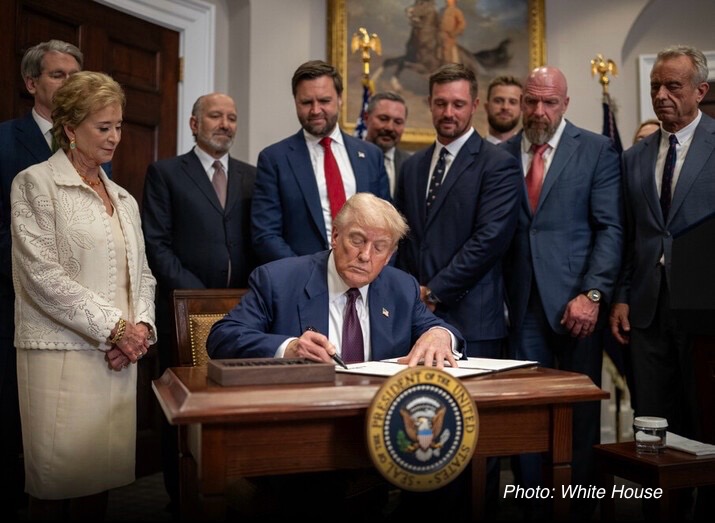- President Trump signed an executive order on July 31, 2025, imposing new tariff rates on over 70 countries and territories.
- The order builds on Executive Order 14257, which declared a national emergency over persistent trade deficits.
- Top tariff rates include 41% on Syria, 40% on Laos and Myanmar, and 39% on Switzerland.
- A 40% penalty applies to transshipped goods meant to evade duties.
- European Union goods with duty rates under 15% are raised to a total of 15%.
The Big Picture
President Donald J. Trump has issued a sweeping modification to U.S. tariff policy through an executive order dated July 31, 2025, amending the previous emergency declaration on trade deficits. The new action targets dozens of foreign trading partners with adjusted reciprocal tariffs, using authority granted under the International Emergency Economic Powers Act and the Trade Act of 1974.
According to the executive order published by the White House, the administration aims to rectify imbalanced trade relationships and protect national economic interests, citing insufficient alignment from certain nations in prior negotiations.
What’s New
The directive introduces new ad valorem tariff rates on goods from countries outlined in Annex I, while countries not listed will default to a 10% rate under the amended Executive Order 14257. The policy includes the following updates:
- European Union: For goods with a duty rate under 15%, the new total will be adjusted upward to 15%.
- Default Rule: Countries not listed in Annex I face a 10% reciprocal tariff.
- Transshipment Penalty: Imports routed through third countries to avoid duties will incur a 40% tariff and other penalties.
What They’re Saying
He emphasized that while some countries are nearing agreements with the U.S., others continue to impose high barriers or refuse to cooperate on trade-security alignment.
Who Is Affected?
According to Annex I of the executive order, the following ten countries received the highest ad valorem tariff rates:
| Country | New Tariff Rate |
|---|---|
| Syria | 41% |
| Laos | 40% |
| Myanmar (Burma) | 40% |
| Switzerland | 39% |
| Iraq | 35% |
| Serbia | 35% |
| Libya | 30% |
| Algeria | 30% |
| South Africa | 30% |
| Bosnia and Herzegovina | 30% |
Note: Canada is not listed in Annex I, so the standard reciprocal tariff would default to 10%.
However, a separate emergency provision specifically raises tariffs on Canadian goods to 35%, effective August 1, 2025, targeting non-USMCA imports. Approximately 15% of Canadian exports to the U.S. fall under this measure.
Implementation and Enforcement
The revised tariffs take effect seven days after the executive order’s publication. Goods already in transit before that date are exempt until October 5, 2025. CBP is authorized to penalize transshipped imports with an automatic 40% tariff, plus applicable fines under U.S. Code 1592.
The Departments of Commerce, Homeland Security, and the U.S. Trade Representative are jointly tasked with enforcement, including biannual publication of countries and facilities involved in transshipment and circumvention schemes.
Monitoring and Outlook
The Secretary of Commerce and the U.S. Trade Representative are directed to track the emergency conditions declared under Executive Order 14257 and recommend further action as needed — particularly if any trading partner fails to cooperate or retaliates against U.S. measures.
The Bottom Line
President Trump’s latest tariff order marks a continued strategy of economic pressure to secure trade reciprocity and national alignment. With rising tariffs and heightened scrutiny on transshipment, the policy reinforces a transactional trade doctrine as global negotiations continue.
EXPLAINED: Why Trump Delayed New Tariffs on Mexico
Poll: 70% of Americans Believe Epstein Cover-Up by U.S. Government
Follow Virginia Times for regular news updates. Stay informed with the latest headlines, breaking stories, and in-depth reporting from around the world.
A global media for the latest news, entertainment, music fashion, and more.















